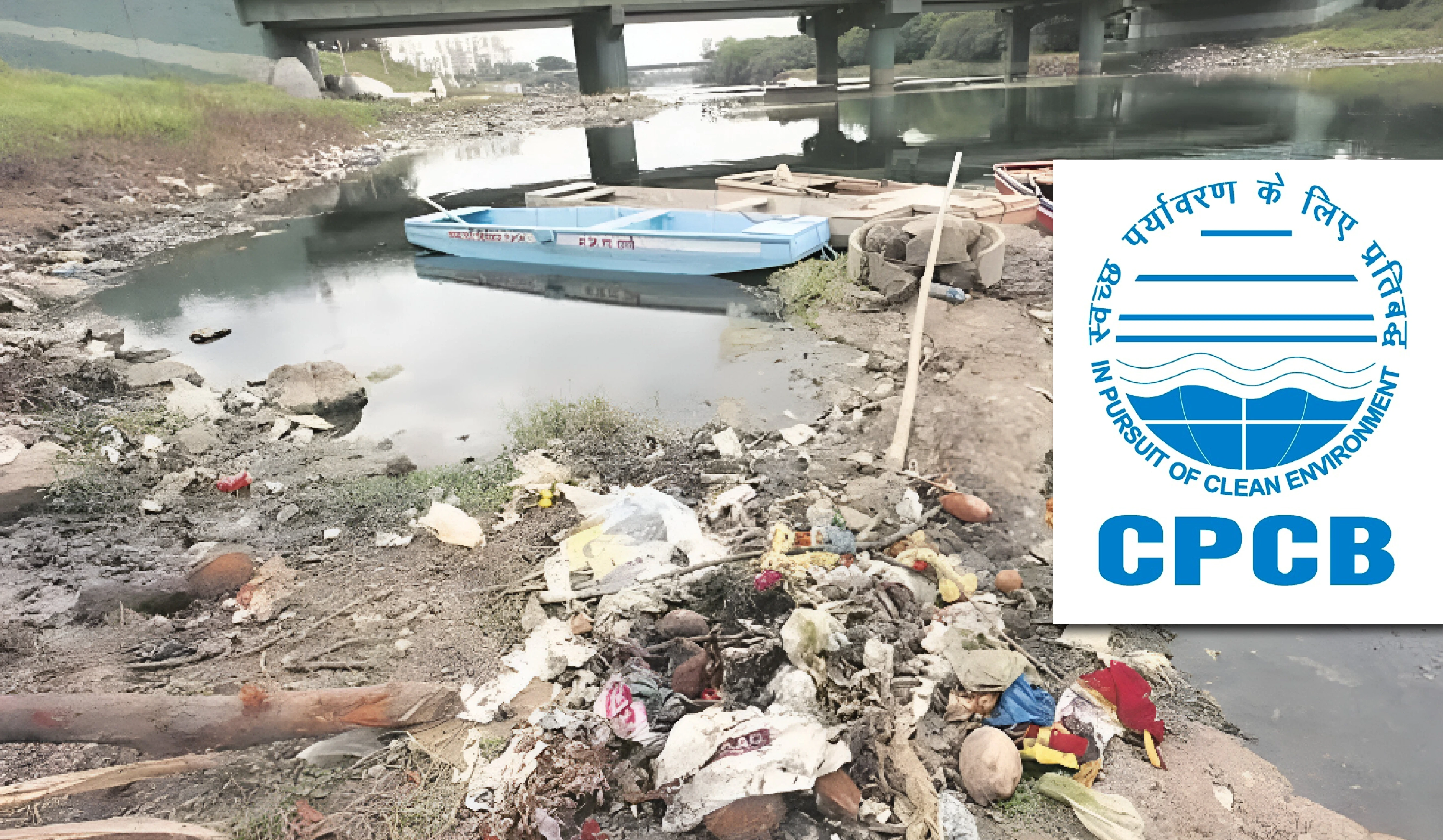Why in the News?
Central Pollution Control Board (CPCB) released assessment report on "Polluted River Stretches for Restoration of Water Quality - 2025".
More on the News
- CPCB executes National Water Quality Monitoring Programme (NWMP) in association with State Pollution Control Boards/ Pollution Control Committees for assessing the water quality of aquatic resources in the country.
- CPCB initiated the exercise of identifying polluted river stretches (PRS) in the country since 2009.
About Polluted River Stretch
- Polluted River Stretch (PRS): Two or more polluted locations identified on a river in a continuous sequence are considered as a stretch and identified as PRS.
- Criteria: Stretches where the Biochemical Oxygen Demand (BOD) exceeds 3 milligrams/litre (mg/L) are identified as polluted stretches by CPCB.
- BOD is a key indicator of water quality and it measures the oxygen needed to break down organic matter.
- Categories: PRS are categorized under five Priority Classes (I to V) on the basis of maximum BOD level observed. For e.g. Priority Class I: Monitoring locations exceeding BOD concentration 30.1 mg/L
- Polluted Stretches: 296 river stretches were polluted on 271 rivers (out of 645 rivers assessed) across 32 states and Union Territories.
- Total number of PRS has decreased from 351 (in 2018) to 296 (in 2025).
- Geographic Distribution: Maharashtra continues to have the highest number (54) of polluted river stretches.
- Notable PRS: Includes Yamuna in Delhi, Sabarmati in Ahmedabad, Chambal in Madhya Pradesh, Tungabhadra in Karnataka, and Sarabanga in Tamil Nadu.
Sources of River Pollution
- Untreated Sewage: According to the CPCB, more than 60% of untreated sewage water is released into rivers daily.
- A CPCB National Inventory of Sewage Treatment Plants (2021) found that urban centres generate 72,368 MLD of sewage daily, far exceeding treatment capacities.
- Untreated industrial effluents: Industries such as those producing chemicals, sugar, paper, and tanneries generate wastewater that contains toxic chemicals, which poses serious risks.
- Others: Municipal solid waste, agricultural runoff, sand mining and illegal encroachments.
Framework for rejuvenation of rivers
- Legal Framework:
- Water (Prevention and Control of Pollution) Act, 1974: Establishes the CPCB as the central unit for planning and regulating environmental matters and SPCB as a state-level major institution with the responsibility to enforce environmental standards.
- Environment (Protection) Rules: Notified under the Environment Protection Act, 1986, these rules lay down standards for industrial discharge.
- Waste Management Rules: Government has notified rules on solid waste, biomedical waste, E-waste, etc.
- River Rejuvenation Programmes:
- Namami Gange Programme: Superseded Ganga Action Plan (GAP) – launched in 1985 – and is being implemented by the National Mission for Clean Ganga (NMCG).
- Yamuna Action Plan: Launched in 1993, it aims to clean the stretch of river Yamuna.
- Centrally Sponsored Scheme of National River Conservation Plan (NRCP): NRCP is implemented in identified stretches of rivers, excluding those in Ganga basin, by providing financial and technical assistance to states/UTs.
- National Water Quality Monitoring Programme (NWQM): Through its network of SPCBs, it advises central and State governments on prevention, control, abatement of water pollution and sets standards on water quality in streams and wells.
- Schemes for Sewerage Infrastructure: Atal Mission for Rejuvenation & Urban Transformation (AMRUT), Smart Cities Mission, and Swachh Bharat Mission.
Key Recommendations
- Source control: Like identification and management of polluting sources including functioning/ status of Sewage Treatment Plants (STPs) / Effluent Treatment Plants (ETPs) and solid waste management and processing facilities, etc.
- Basin Management: River catchment/basin management and flood plain zone protection and its management such as protection and management of Flood Plain Zones, rain water harvesting, maintaining minimum environmental flow (e-flow) of river and plantation on both sides of the river.
- e-Flow is the quantity, timing, and quality of water flows required to sustain freshwater and estuarine ecosystems and the human livelihoods and well-being that depend on these ecosystems. (Brisbane Declaration, 2007)
- Removing Encroachment: Setting up of biodiversity parks on flood plains by removing encroachment shall also be considered as an important component for river rejuvenation.
- Sewage Treatment: Focus on proper interception and diversion of sewage carrying drains to the STP and emphasis should be on utilization of treated sewage so as to minimize extraction of ground or surface water.
- Use of Technology: Advanced technology, including AI, robotics, Remote sensing, etc., may be harnessed for real-time monitoring and waste management.
Conclusion
The declining number of polluted river stretches shows that collective efforts are beginning to yield results. By strengthening sewage and waste management, enforcing strict industrial compliance, and harnessing technology for real-time monitoring, India can transform its rivers into lifelines of prosperity.





